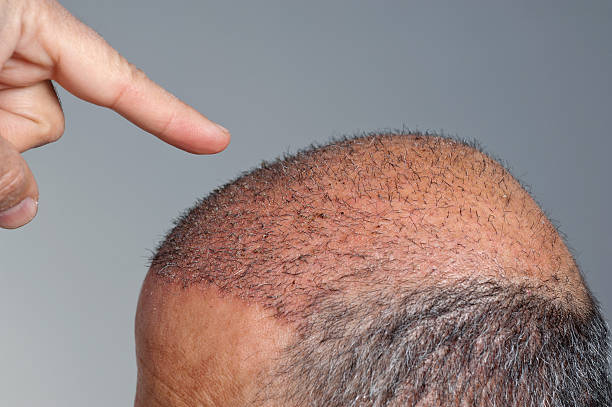Seasonal regimen adjustments to reduce cuticle stress and dryness
Seasonal shifts often change air humidity and temperature, which affects hair and skin at the microscopic level. Adjusting routines to protect the cuticle and preserve moisture helps minimize stress and dryness for both scalp and epidermis. A few targeted changes in cleansing, moisturizing, and protective steps can improve barrier function and support recovery across colder, drier months and hotter, more humid seasons.

This article is for informational purposes only and should not be considered medical advice. Please consult a qualified healthcare professional for personalized guidance and treatment.
How do cuticle and follicle react to seasonal change?
Cuticles are the outermost layer of hair fibers; they lift or flatten in response to humidity and mechanical stress. In cold, dry air cuticles can lift and crack, increasing water loss and tangling. Follicles respond to environmental stress by altering sebum production—often reducing surface oils in winter and increasing them in humid months. Seasonal wind, temperature shifts, and indoor heating or air conditioning create repeated swelling and shrinking of hair fibers. Gentle handling, reduced heat styling, and adding targeted moisture can minimize mechanical damage to cuticle scales and reduce breakage originating at the follicle.
How does scalp and epidermis change with seasons?
The scalp and epidermis are affected by the same moisture gradients that impact hair. Low humidity and heated indoor environments strip moisture from the epidermis, increasing sensitivity and flaking. In warmer months, sweat and oil levels rise, changing the local microenvironment around follicles and potentially increasing irritation or acneiform issues. Monitoring your scalp for signs—tightness, redness, excess oil, or dandruff—lets you adapt product frequency and formulations. Balancing gentle cleansing with restorative moisturizing supports both scalp health and the epidermal barrier, helping tissues recover from seasonal stressors.
How to maintain hydration, moisture, and humectants?
Humectants are ingredients that attract and hold water in the epidermis and hair fiber. Glycerin, hyaluronic acid, and certain sugars help retain hydration when environmental moisture is low. To preserve moisture, layer humectants under occlusive or emollient products: humectants draw water from the environment and the deeper layers of the skin, while emollients smooth and occlusives reduce transepidermal water loss. Use moderate concentrations of humectants and avoid overapplication in very dry indoor air without a follow-up sealant, which can otherwise pull moisture out from deeper layers and worsen dryness.
When to use emollients and occlusives?
Emollients soften and fill gaps between skin cells and hair cuticle edges, improving texture and reducing roughness. Occlusives form a protective film that limits water evaporation. In colder months, prioritize occlusive agents such as petrolatum or plant-derived oils in small, targeted amounts to lock in moisture after humectant application. Emollients like squalane, fatty acids, and certain esters smooth the cuticle and epidermis and help reduce friction. For oily or acne-prone scalps, choose lightweight emollients and non-comedogenic occlusives, and apply sparingly to avoid clogging follicles.
How should cleansing, surfactants, and pH be adjusted?
Cleansing frequency and surfactant choice should reflect seasonal oil and sweat patterns. Strong anionic surfactants can strip both moisture and lipids, disrupting the epidermal and scalp barrier; switch to milder surfactants or sulfate-free formulas when sensitivity or dryness increases. Pay attention to product pH: formulations close to the skin’s natural slightly acidic pH help maintain barrier function and microbiome balance. In humid months, a more thorough cleansing routine may be appropriate, while in dry seasons, reduce frequency and use gentler agents to avoid compounding cuticle and barrier damage.
How to protect barrier, sensitivity, and support recovery?
Barrier protection reduces sensitivity and speeds recovery after seasonal insults. Adopt a routine that combines gentle cleansing, targeted hydration (humectants), smoothing (emollients), and sealing (occlusives). Use protective habits: limit hot showers and high-heat styling, wear hats in extreme sun or wind, and employ satin or silk pillowcases to reduce friction on hair cuticles. For areas showing increased sensitivity, choose fragrance-free, pH-balanced products and avoid concurrent use of aggressive actives. If the barrier is compromised, focus on simplified routines and allow gradual recovery rather than introducing multiple new products at once.
Conclusion Seasonal regimen adjustments that focus on the cuticle, follicle, scalp, and epidermis reduce dryness and mechanical stress while supporting recovery. Thoughtful use of humectants, emollients, and occlusives—combined with gentler surfactants and pH-aware cleansing—helps preserve moisture and barrier integrity across changing conditions. Monitor how your skin and hair respond and adapt product choices and routines to match humidity and temperature shifts, prioritizing sensitivity and long-term barrier health.





